Changing of the Guard Ceremony: Origins and Who’s Who.
Steeped in history, full of pomp, ancient ceremony. But have you ever wondered who all those soldiers were? Those soldiers on sentry duty at Buckingham Palace and those soldiers who march and ride during Changing of the Guard ceremony? This blog explains who’s who, where is where and how they got here.
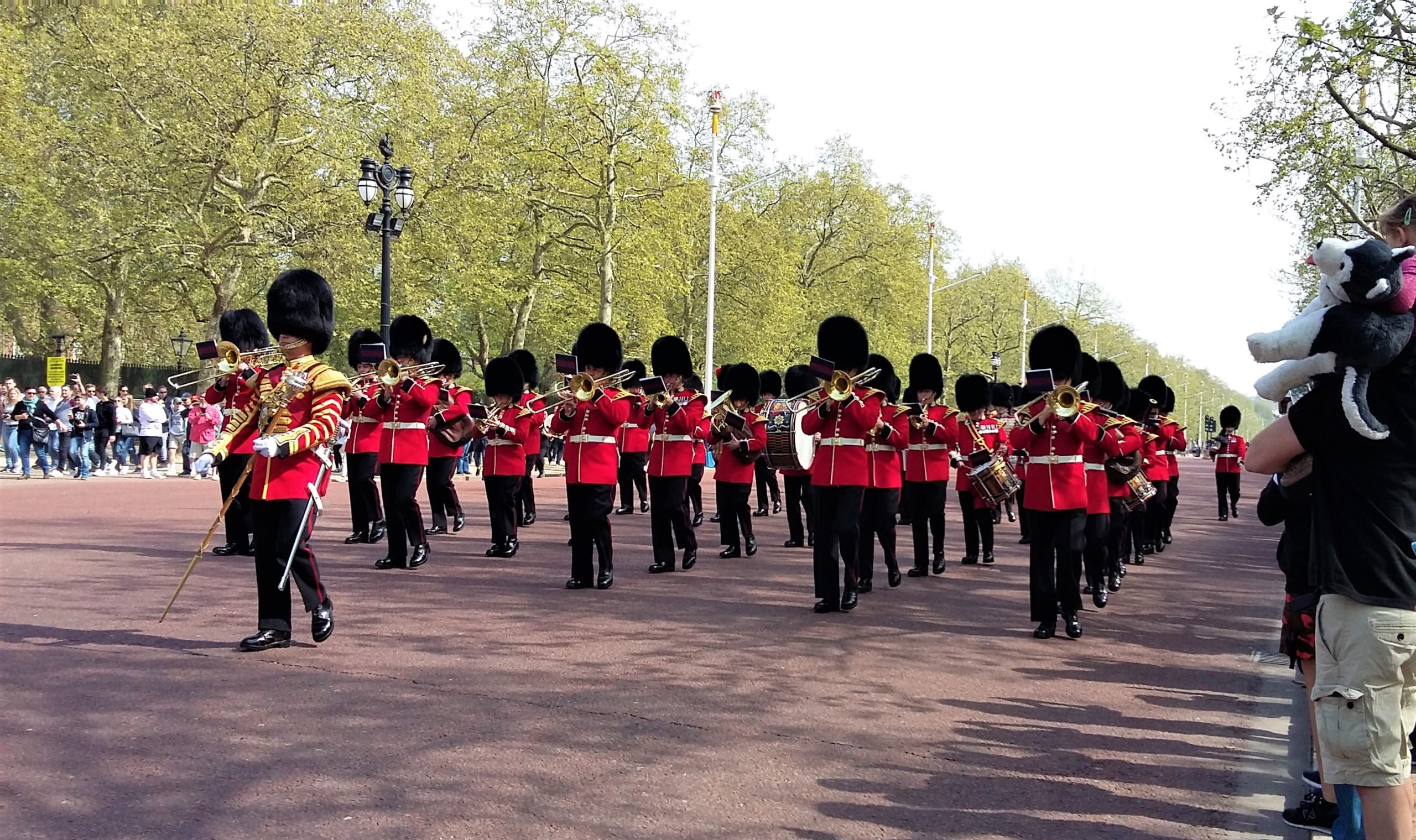
What’s in a Name.
Changing of the Guard at Buckingham Palace can also be called ‘Changing the Guard’ or just ‘Guard Mounting’. I used to be confused myself when I heard people call the ceremony ‘Guard Mounting’ – which simply refers to the ceremony of going on guard duty – but then I realized it was quicker to say once people knew what I was talking about.
Note: for a full step-by-step guide, timetable and map to Changing of the Guard Ceremony please click here for my blog ‘Changing of the Guard Ceremony: Definitive Step-by-Step Guide’. An abridged timetable appears at the end of this blog.
Changing of the Guard Ceremony: Origins.
An official guard and ceremony began in the late 1400s during the reign of King Henry VII. Henry was regarded by many as a usurper to the English throne. He’d won the ‘Wars of the Roses’ in battle against Richard III – another usurper and a distant cousin, who was killed in the heat of the battle – and established the Tudor dynasty. But for much of his reign Henry felt insecure.
In order to provide security and project military discipline around the monarch the guard were made up of a new Royal Body Guard stationed in the Tower of London. A detachment of troops still guard the Jewel House and Queen’s House in the Tower of London.

Charles II (Mark Carter)
Guards and ceremony for monarchy continued until the 1640s. Following an enforced break during the Interregnum, when Britain was a republic, the ceremony restarted on the restoration of King Charles II in 1660 – although he’d also had a loyal guard in exile. Monarchy returned in pomp to their primary London residence at Whitehall Palace, which is where the king’s Life Guard were stationed and the ceremony took place. This was a cavalry regiment and they remain the regiment who guard Horse Guards today, on the ancient site of Whitehall Palace.
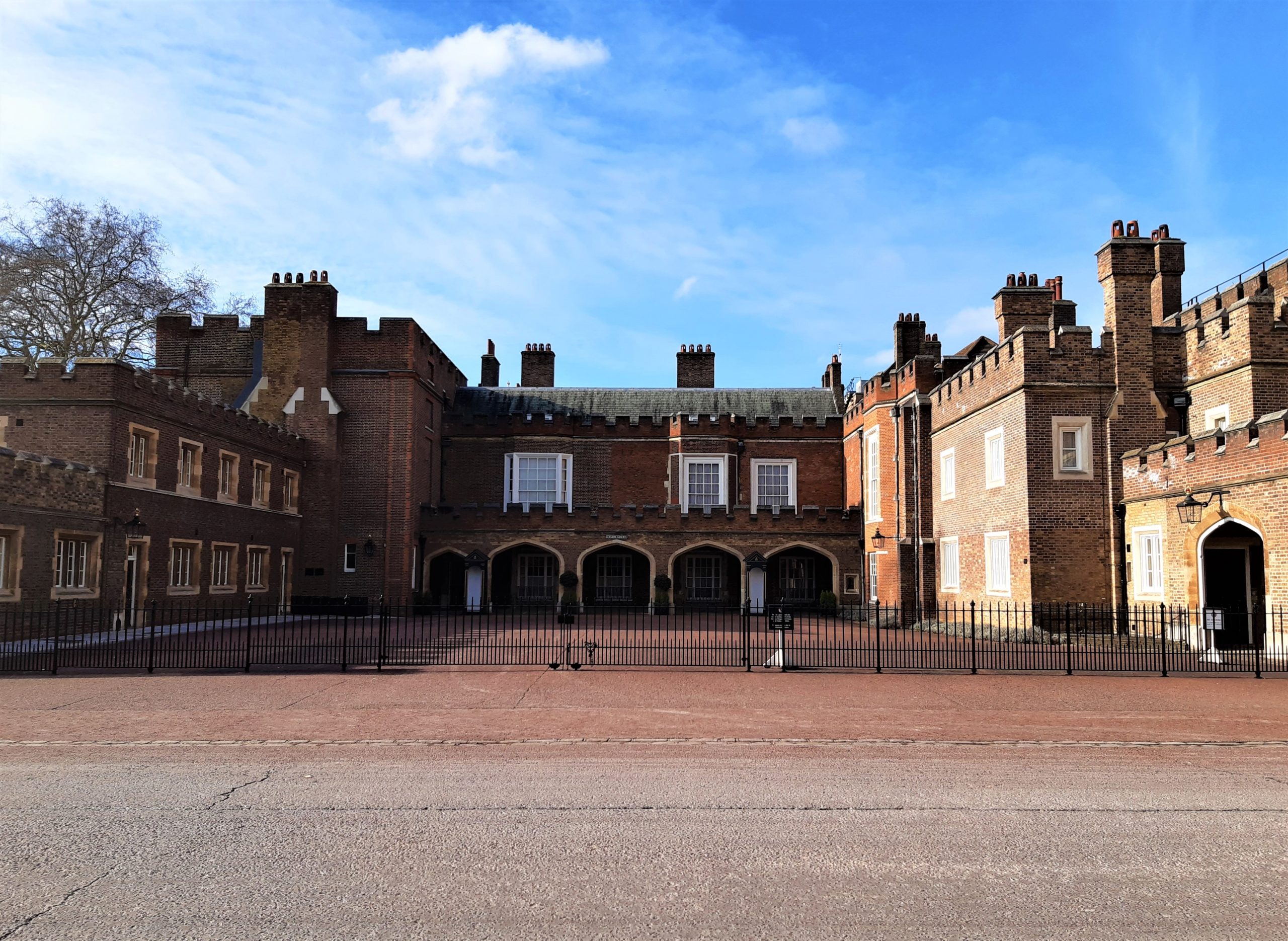
St James’s Palace – Friary Court
Whitehall Palace was almost entirely consumed by fire in 1698 during the reign of William III and the official royal court moved to St James’s Palace. A ceremony, perhaps recognisable to the one we see today, began to develop.
After Queen Victoria moved into Buckingham Palace in 1837 the Queen’s Guard remained at St James’s Palace, with a larger detachment guarding Buckingham Palace, as it still does today. The format of the modern ceremony was finally settled in 1903 and 1962 with the ceremonial focus shifting away from St James’s Palace to Buckingham Palace.
Never the less, the official status of St James’s Palace is why the Captain of the Queen’s Guard and colours (either regimental or the sovereigns if they are in residence at Buckingham Palace) are still based here. It’s why the ceremony begins here, in Friary Court, at 10.30am. Whilst it is the Cavalry who still guard Horse Guards, it is a company of Foot Guards who guard both St James’s Palace and Buckingham Palace.
The Foot Guards have a role as the primary garrison for the capital, for the military security of the monarch and for ceremonial duties in London. Despite the violent divisions of the English Civil War the modern Foot Guards have both Parliamentary and royal origins.
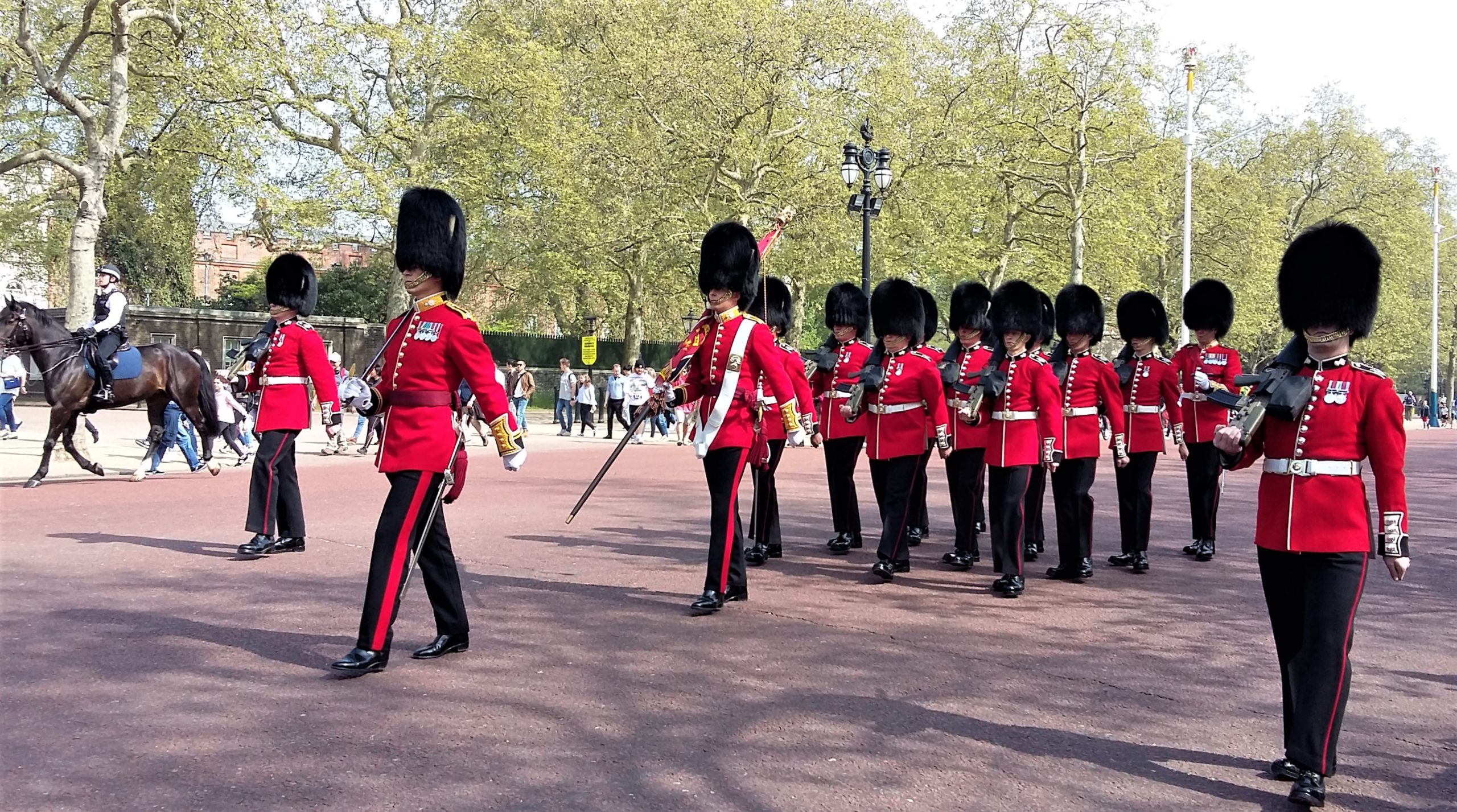
The Grenadiers roots go back to guarding Charles II in exile. The Scots foundation was in protecting Protestant settlers in Ulster. The Coldstream were an integral part of Oliver Cromwell’s New Model Army.
After Cromwell’s death the Coldstream, under command of General Monck, switched loyalties to Charles, the king in exile, and helped to secure his return. In 1661 they became an official regiment within the Household Troops, now known as the Household Division. The Blues and Royals of the Household Cavalry had similar New Model Army origins.
The Household Division.
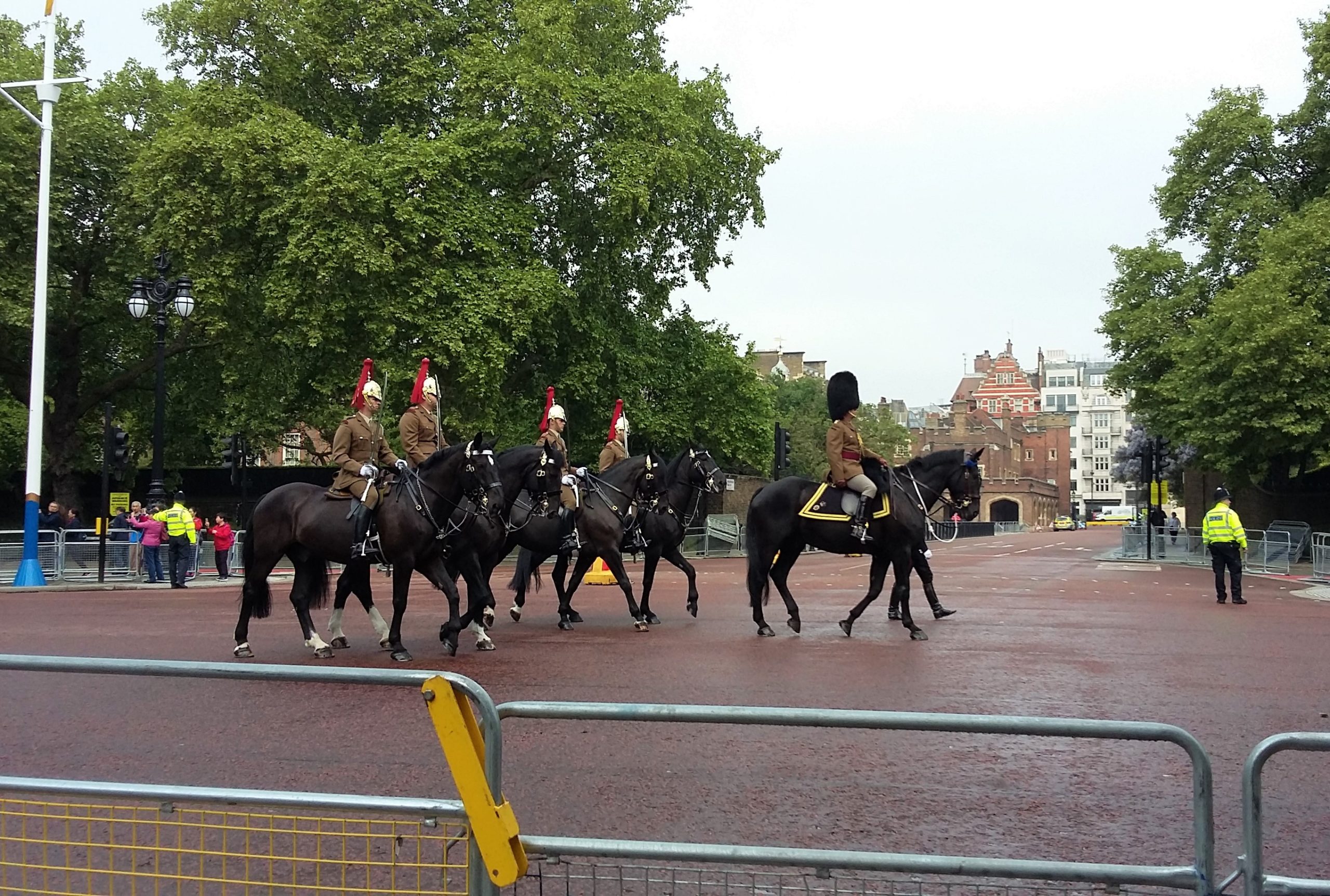 The five regiments of Foot Troops that carry out the majority of guard duties are from the Household Division. They are all active military regiments and are easily identified by their uniforms which include the famous red tunics and tall bearskin hats.
The five regiments of Foot Troops that carry out the majority of guard duties are from the Household Division. They are all active military regiments and are easily identified by their uniforms which include the famous red tunics and tall bearskin hats.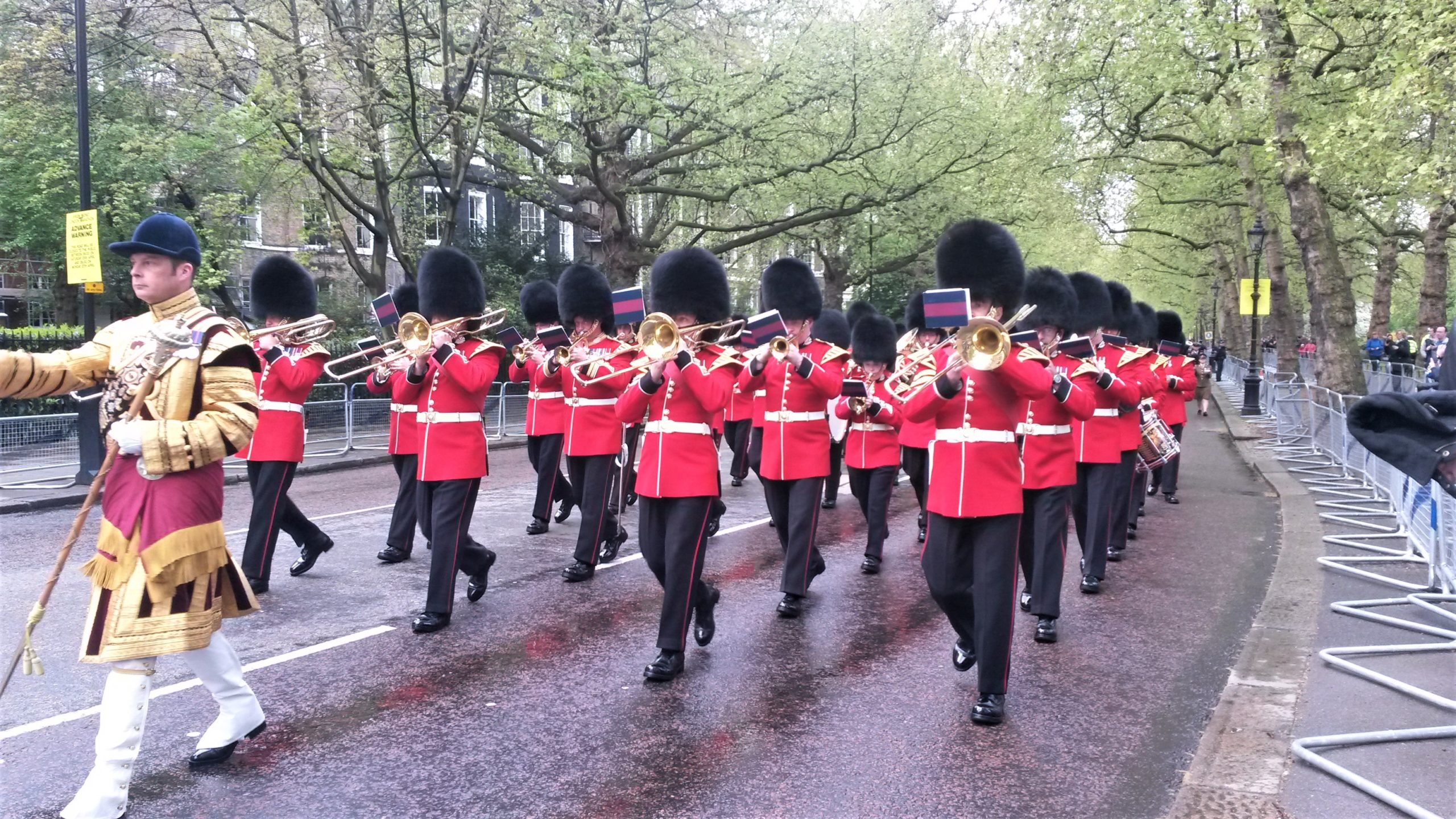 The Foot Troops are and always have been active infantry regiments.
The Foot Troops are and always have been active infantry regiments.
The Household Division also includes the Household Cavalry Mounted Regiment which is made up of the Life Guards and the Blues and Royals. Away from ceremony the cavalry are also active military regiments and drive armoured vehicles.
Each Regiment also has its own band. This can be a full band, a corps of drums, a fife or a pipe band. Musicians, both male and female, provide combat support.
The word ‘Household’ refers to the royal household, who they guard.
Other active regiments are given the honour of performing guard duties. These include the Mercian Regiment, Ghurkas, Royal Air Force, Royal Marines and others from the UK and Commonwealth.
How to I.D. the Regiments.
| Guards Regiments | Plume Colour | Plume Position | Button Groups | Collar Badge | Shoulder Badge | Motto | Formed |
| Grenadier | White | Left | Single | Grenade | Royal cypher
(crown and garter) |
Honi soit qui mal y pense Shame Upon He Who Thinks Evil Of It |
1658 |
| Coldstream | Red | Right | Pairs | Garter Star | Rose (Tudor style) | Nulli Secundus Second To None |
1661 (origin 1650) |
| Scots | Threes | Thistle | Thistle Star | Nemo Me Impune Lacessit No One Assails Me With Impunity |
1660 (origin 1642) | ||
| Irish | Blue | Right | Fours | Shamrock | St Patrick Star | Quis Separabit? Who Shall Separate Us? |
1900 |
| Welsh | Green-white-green | Left | Fives | Leek | Leek | Cymru am Byth Wales Forever |
1915 |
| Mounted Regiments | |||||||
| Life Guards
Red tunic |
White | Saddle cloth
White |
Honi soit qui mal y pense Shame Upon He Who Thinks Evil Of It |
1658 | |||
| Blues and Royals
Blue tunic |
Red | Saddle cloth
Black |
Honi soit qui mal y pense Shame Upon He Who Thinks Evil Of It |
1969 merger:
Blues est. 1650 Royals est. 1661 |
Note: ‘Honi soit qui mal y pense/Shame Upon He Who Thinks Evil Of It’ is the motto of the Order of the Garter, established in 1348 by King Edward III, hence its adoption by regiments within the Household Division. The word ‘it’ is believed to refer to the monarchy and its attributes. The motto has Arthurian and chivalric connections, both of which obsessed the medieval English court.

Courtesy of the Worshipful Company of Hackney Carriage Drivers
| If you would like to experience Changing of the Guard ceremony as part of a guided London sightseeing tour that’s easy. Choose from one of my private London tours:
Private tours, door-2-door service, pickup and drop-off, 6 people maximum, I explain as we explore. |
Fun Facts about Royal Regiments.
If the monarch is in residence at Buckingham Palace:
- The royal standard will fly. If the monarch is not in residence the Union Flag (aka Union Jack) will fly.
- The guard at Buckingham Palace will be doubled from two to four in the forecourt.
- The guard at St James’s Palace will be doubled to two outside Clarence House (normal guard) and two extra in Friary Court.
- The centre front horse of the cavalry during their change ceremony will be white.
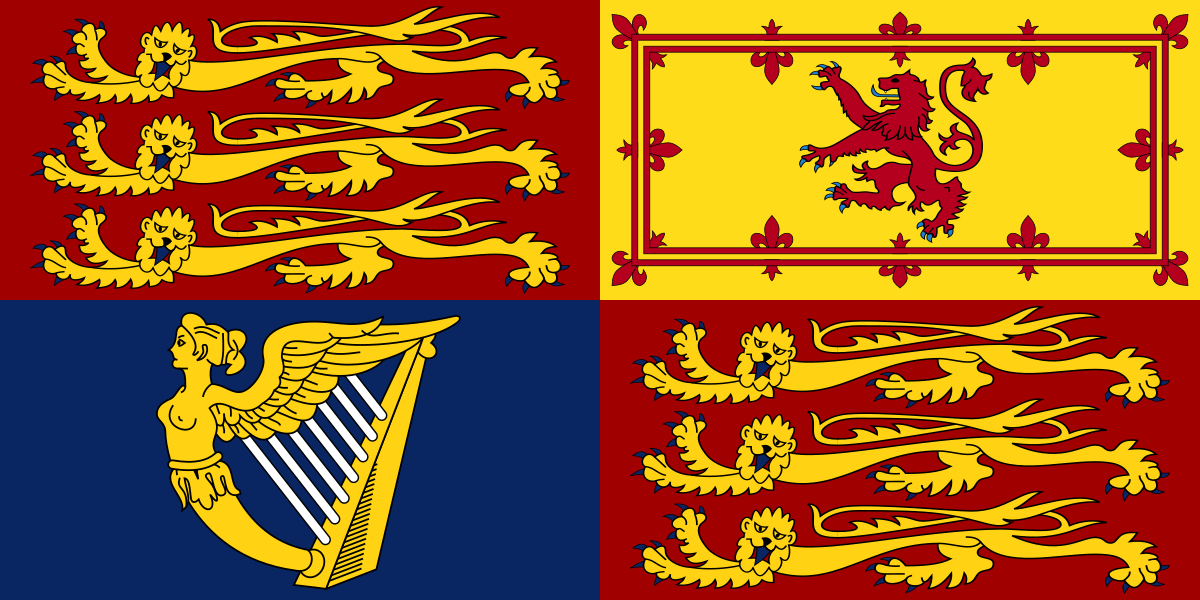
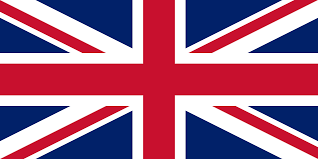
The red tunics of the Foot Guards are not designed to hide blood. It was found that when lots of soldiers wear red the block of colour creates an uncountable mass, making it difficult for the enemy to calculate numbers. The red dye was also cheap to produce. The official name is ‘Full Dress’ – as opposed to, for instance, ‘Combat Dress’.
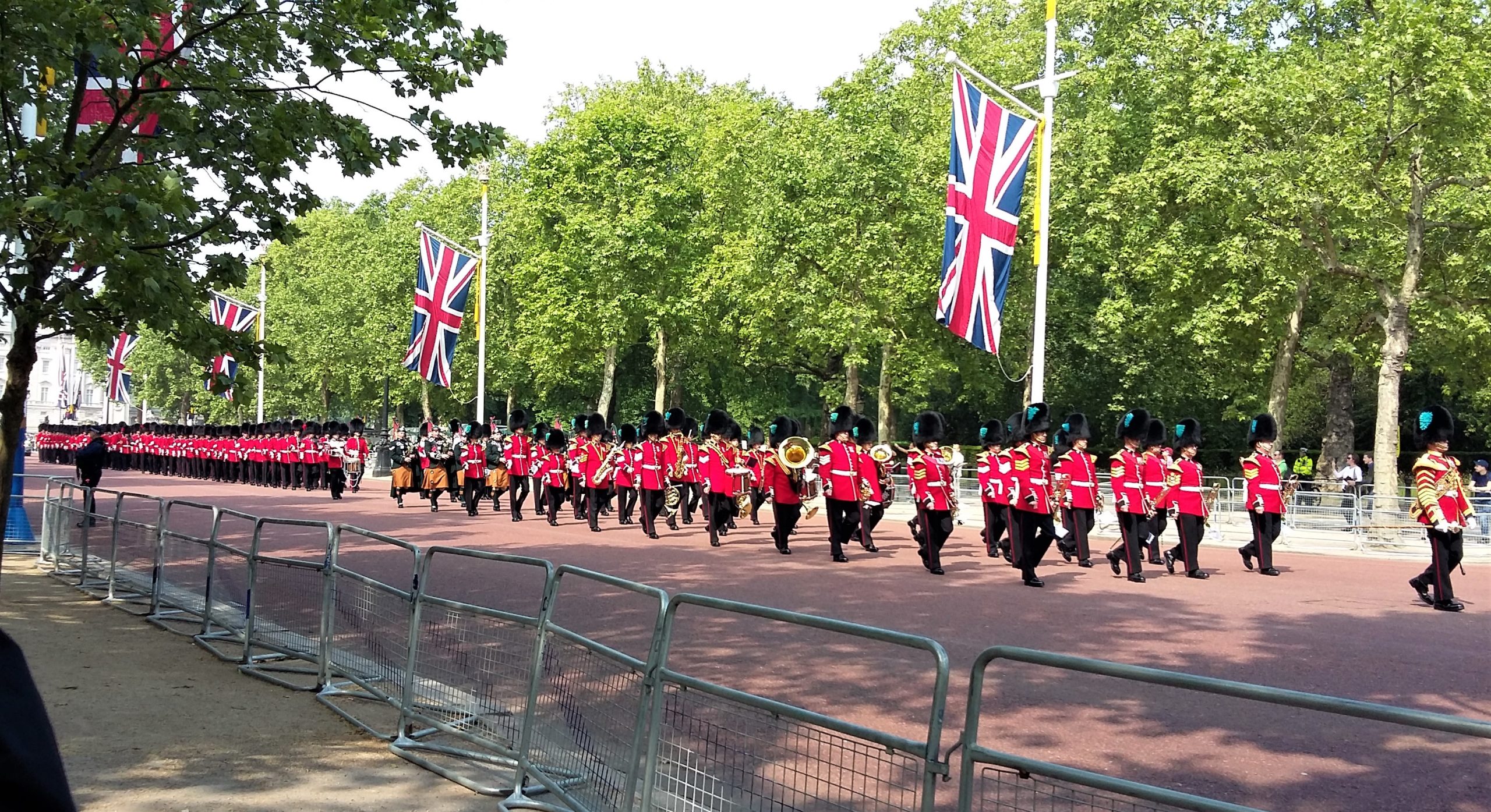
Irish Guards rehearsing for Trooping the Colour
The bearskin hats of the Foot Guards were worn only by Grenadiers after 1815 – replacing the mitre shape. They were adopted by the Coldstream and Scots Guards in 1831 and by the Irish and Welsh Guards on their formation. Nowadays they are made from the fur of Canadian black bear. The standard bearskin is 11 inches (280 mm) tall at the front, 16 inches (410 mm) at the rear and weighs 1.5 pounds (0.68 kg). An officer’s bearskin is made from the fur of the Canadian brown bear, as the female brown bear has thicker fur, and dyed black. An entire skin is used for each hat.
The Grenadiers were known as the First Regiment of Foot Guards until 1815 when they were renamed in honour and celebration of their vanquishing the Grenadiers of Bonaparte’s forces. This is also when the entire regiment adopted the bearskin hat.
The Queen’s Company of The Grenadier Guards traditionally provides the pallbearers at the funerals for all deceased monarchs as all soldiers within the company are over six foot.
The Scots Guards have no plume because when the regiments historically formed up for battle they were flanked by the Grenadier and Coldstream guards, who have visible plumes on the left and right respectively. Today the forming up order is used for mass marching in parades.
The monarch is Colonel-in-Chief of all seven regiments of the Household Division. Every second Saturday in June one of the five foot guards regiments is selected to troop their colour at the Trooping the Colour on Horse Guards Parade, held to commemorate the Sovereign’s official birthday.
Guards are on sentry duty for two hours on then four hours off. They may not eat, sleep, smoke, stand easy, sit or lie down when on duty. Every ten minutes a sentry will come to attention, slope arms and march across their post, normally about 20 paces. Repeating this four or five times the guard halts, shoulders their arms and returns to standing at ease.
Today there are four guard posts:
- Buckingham Palace.
- St James’s Palace.
- Tower of London.
- Windsor Castle.
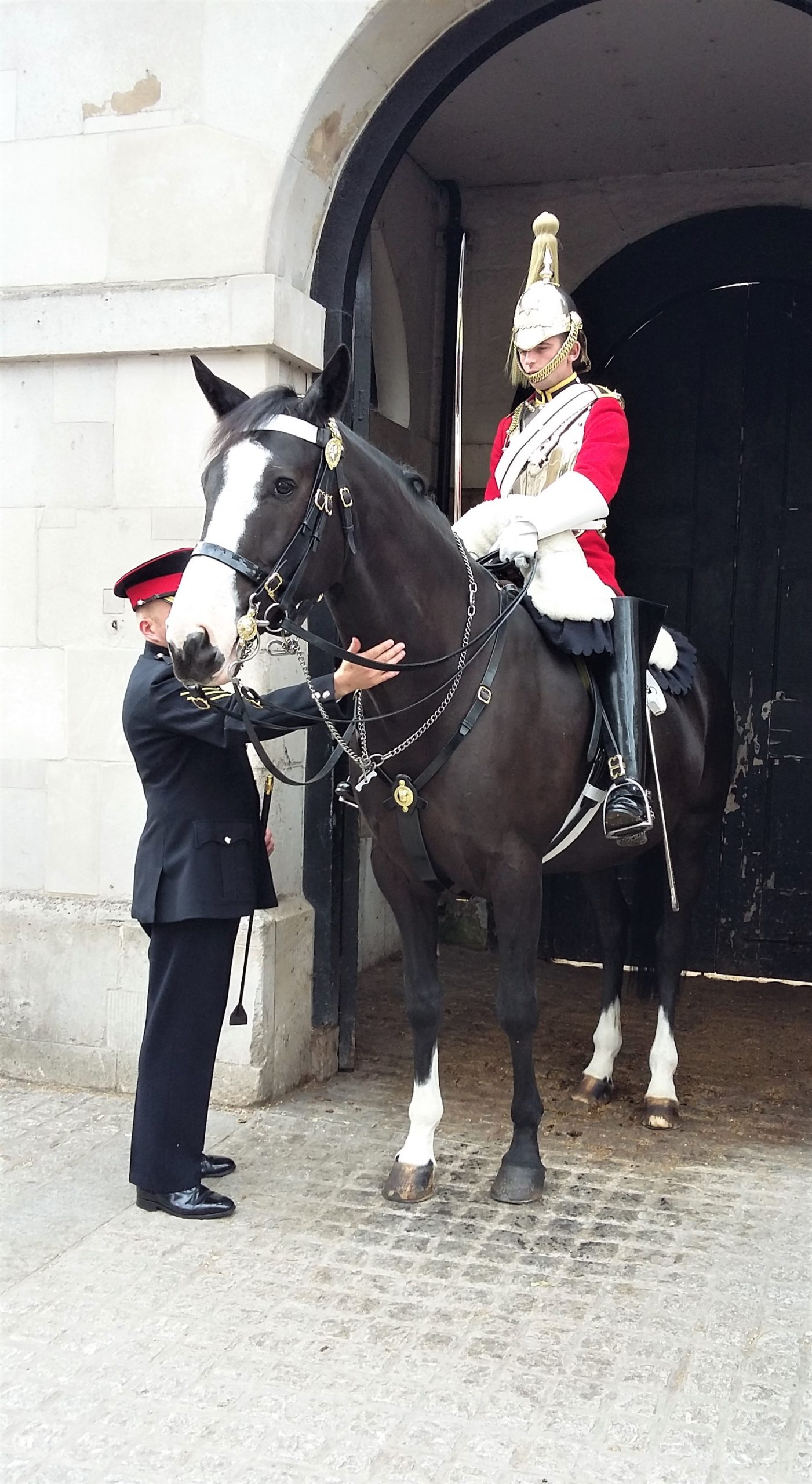 In 1818 there were 89 sentry posts permanently manned by Foot Guards in central London, found by ten separate guards mounted daily. These posts included Kensington Palace and the British Museum. There were also three night guards at the Bank of England, Theatre Royal Drury Lane and The Royal Opera House.
In 1818 there were 89 sentry posts permanently manned by Foot Guards in central London, found by ten separate guards mounted daily. These posts included Kensington Palace and the British Museum. There were also three night guards at the Bank of England, Theatre Royal Drury Lane and The Royal Opera House.
The uniform worn by the Cavalry includes armour called a cuirass. This is a single or double piece of armour that protects both chest and back. Their helmets are silver with brass and silver fittings, with horse hair plumes bound into an onion shape. The Life Guards wear their chin strap below their lower lip, as opposed to the Blues and Royals who wear it under their chin.
The Household Cavalry are under orders to bar the entrance of all carriages and cars through the arch of Horse Guards, unless the traveller is in possession of an ‘ivory pass’. Only the royal family is exempt from this rule.
One afternoon in 1894 Queen Victoria called to visit the Cavalry guards at Horse Guards without warning. She found them to be drunk and gambling. To prevent a re-occurrence she ordered a Defaulters Parade and Inspection to take place daily at 4.00pm for the next hundred years. Despite the time limit passing the short ceremony is still carried out and is more generally called the Dismounting.
Changing of the Guard Ceremony at Buckingham Palace – Timetable in brief.
10:25am: St James’s Palace – Most of St James’s Palace’s Old Guard form up in Friary Court and are inspected by the Captain of The Queen’s Guard. They may be accompanied by a Regimental Band, Fife Band, Bagpipe Band or Corps of Drums.
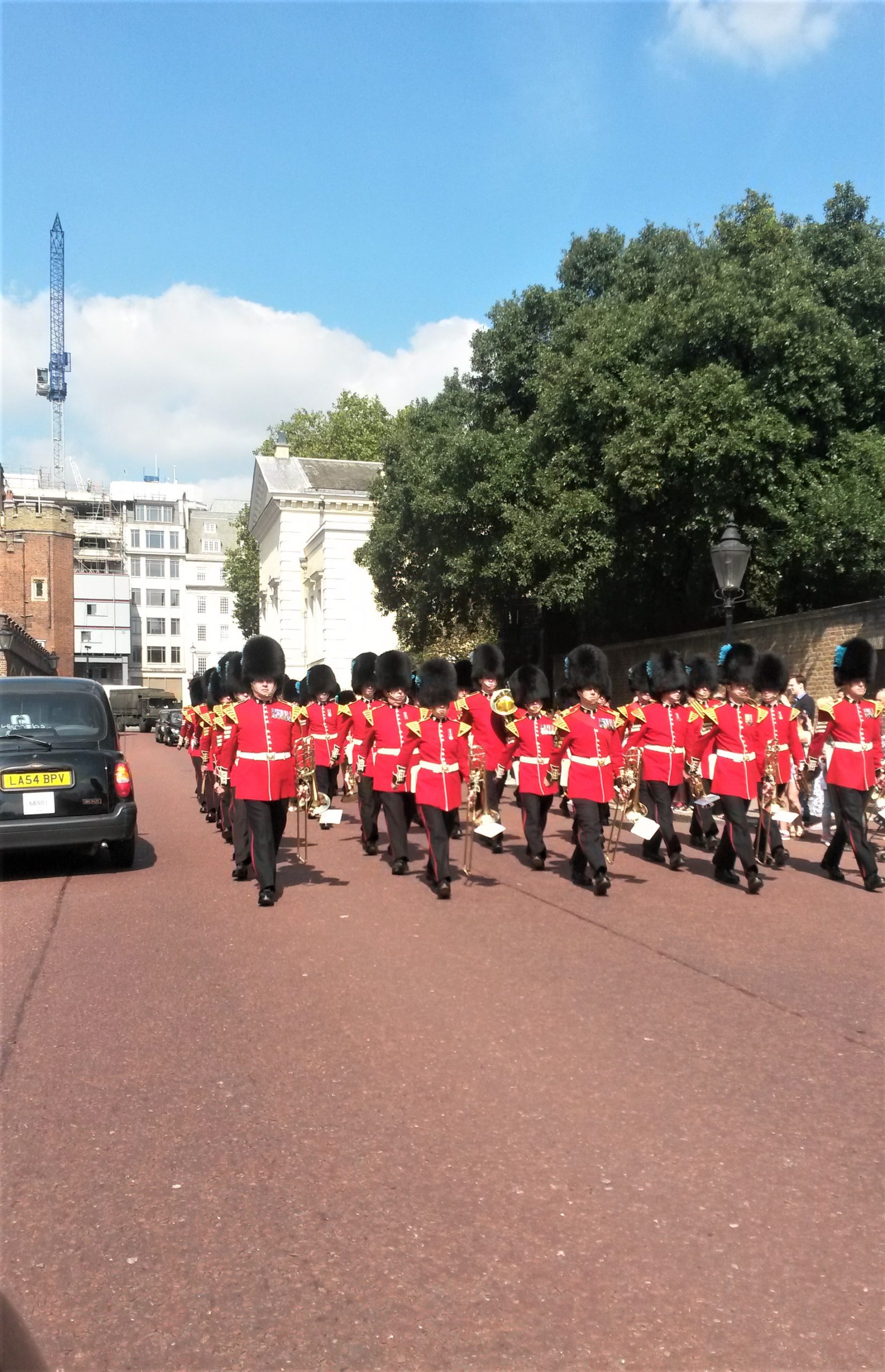
10.43am: This contingent leaves St James’s Palace and marches down The Mall to Buckingham Palace. If the timing is right they will pass the oncoming New Guard of the Household Cavalry (who are on their way to Horse Guards Parade for their Guard Change ceremony). 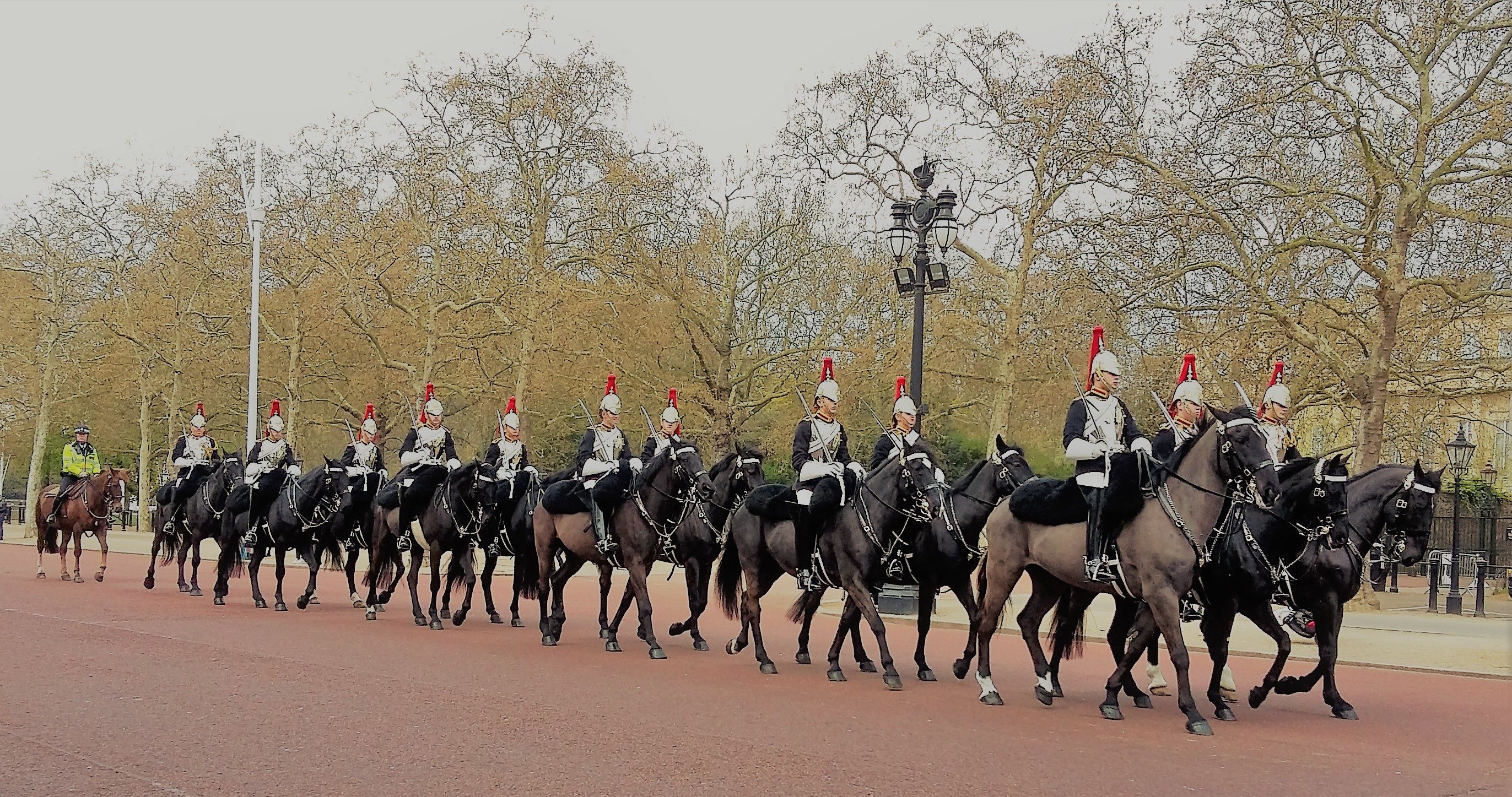
10.30am: Wellington Barracks – In the Parade Ground a Regimental Band is warming up, usually playing non-military tunes. They like musicals (well, who doesn’t), film and TV themes (Star Wars and Game of Thrones are popular) and the occasional pop hit (Katy Perry’s ‘I kissed a girl’ has been heard). The band will revert to military tunes for the main ceremony.
10.40am: The New Guard will also be marching in the Parade Ground. They will form up on parade for inspection and the arrival of the Regimental Colour (flag) in preparation for their departure to Buckingham Palace.
10.55am: The New Guard led by the Regimental Band march out of the gates to Buckingham Palace.
10.30am: Buckingham Palace – Buckingham Palace’s Old Guard forms up in the Palace forecourt for inspection. At 10:45am, the Old Guard of St James’s Palace, having marched down The Mall, enters the forecourt of Buckingham Palace through the gates on the left and take up a position beside the Buckingham Palace detachment. 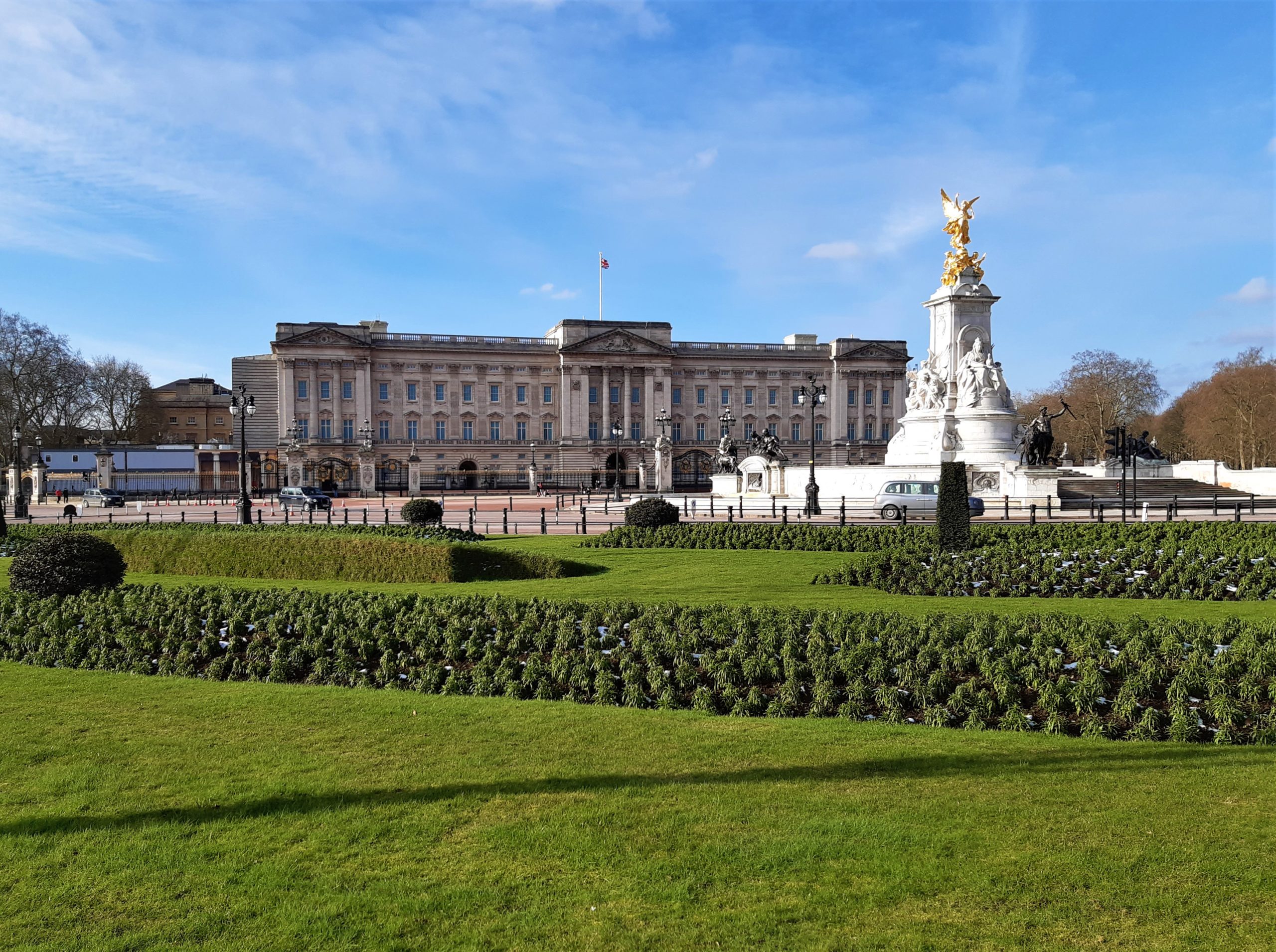
Now complete, the combined Old Guard awaits the arrival of the New Guard from Wellington Barracks.
10.55am: The New Guard leaves Wellington Barracks and marches to Buckingham Palace, entering the forecourt through the gates on the right. They then march in front of the Band and take up a position facing the Old Guard.
11.00: The Band plays the New Guard’s Regimental Slow March, advancing towards the Old Guard. The Old Guard and New Guard both ‘Present Arms’ (salute with rifles). The Captain of the Old Guard then hands over the keys of the Palace to the Captain of the New Guard. This symbolises the transfer of responsibility for the Palace’s security and the New Guard are now officially ‘the Queen’s Guard’.
11.10am: A small detachment of the New Guard for St James’s Palace march out, through the gates on the right, accompanied by a small detail from the Old Guard. 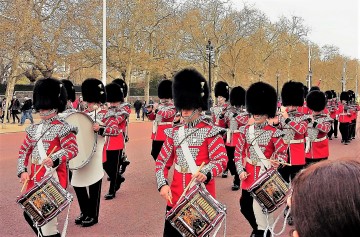 They quick march up The Mall to St James’s Palace and enter the Palace through the main gates on The Mall. The ceremony at Buckingham Palace continues.
They quick march up The Mall to St James’s Palace and enter the Palace through the main gates on The Mall. The ceremony at Buckingham Palace continues.
11.40am: The Guards re-form and are called to ‘Attention’. To a Regimental Slow March the Old Guard advances towards the New Guard. They exchange compliments as the Old Guard exits through the gates, led by the Band. Once they have left through the Palace gates, the Old Guard ‘breaks into quick time’ and continue their march to Wellington Barracks.
11.45: The New Guard in the Palace forecourt is given the order to ‘Slope Arms’ and divides into two. Those responsible for guarding St James’s Palace, usually led by a remaining Band or Corps of Drums, march out through the gates and up the Mall to place their Regimental Colour in the Guard Room at St James’s Palace. The Buckingham Palace detachment retires to the Palace Guard Room to assume its duties.
Note: for a full step-by-step guide, timetable and map to Changing of the Guard Ceremony please click here for my blog ‘Changing of the Guard Ceremony: Definitive Step-by-Step Guide’.
| If you would like to experience Changing of the Guard ceremony as part of a guided London sightseeing tour that’s easy. Choose from one of my private London tours:
Private tours, door-2-door service, pickup and drop-off, 6 people maximum, I explain as we explore. |
When do the ceremonies take place? 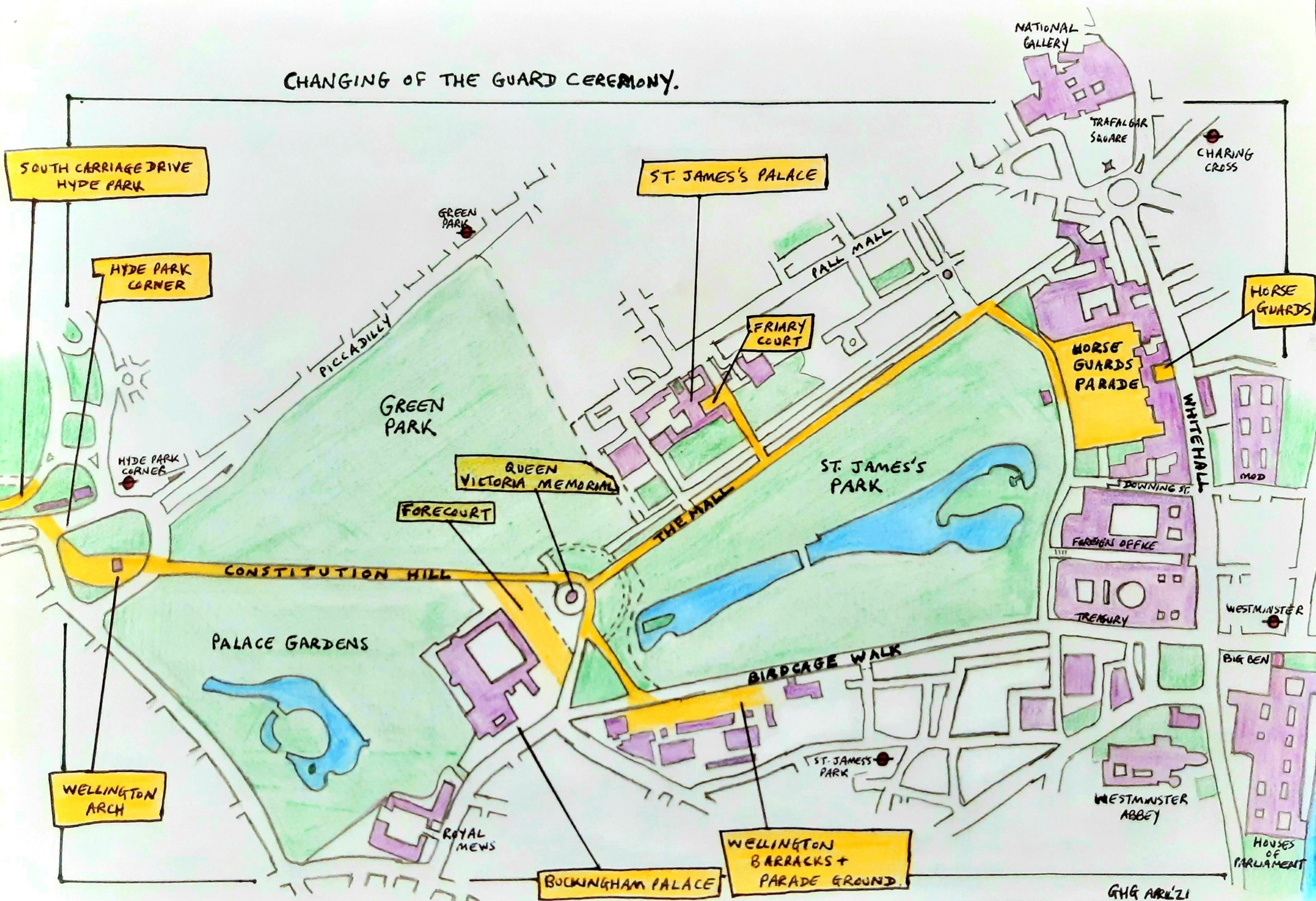
Changing of the Guard:
August – May every Sunday, Monday, Wednesday and Friday.
June and July the ceremony is daily.
Horse Guards (Change of the Queen’s Life Guard):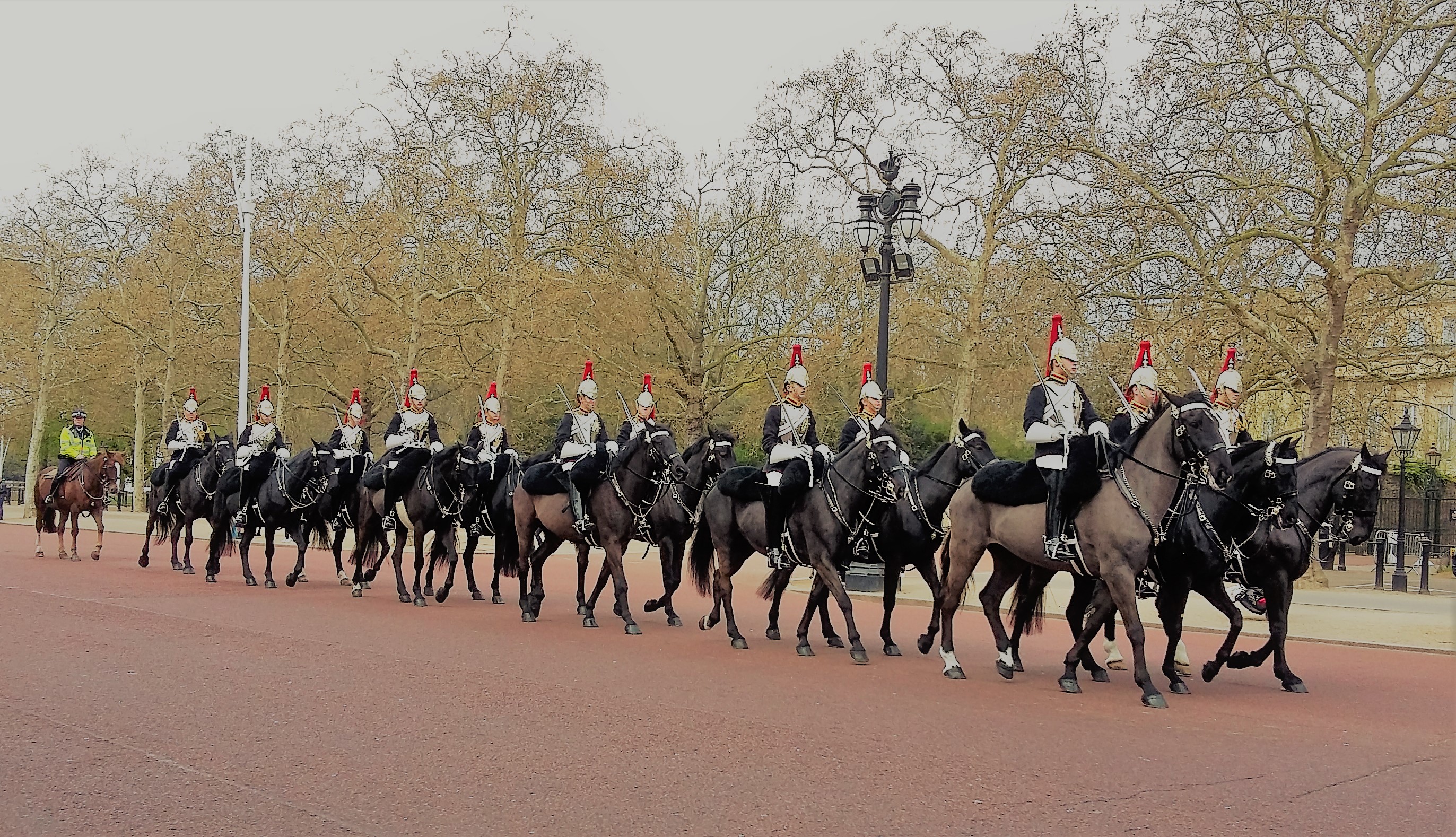
Daily throughout the year. On Sundays all cavalry timings start one hour earlier.
If it’s raining the ceremonies can be cancelled, even at the last moment. Foot troop movements will be carried out very quickly with no ceremony. The cavalry will have a short ceremony in the stables.
